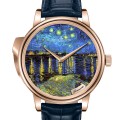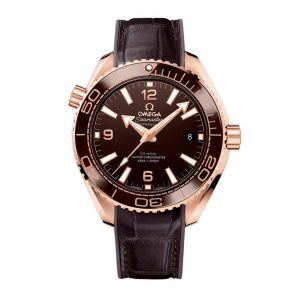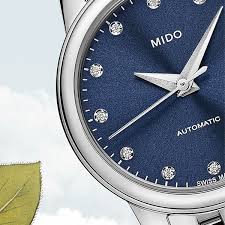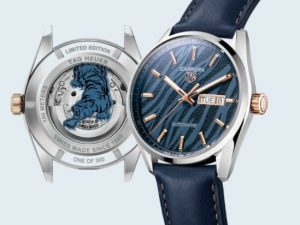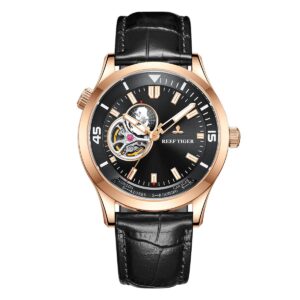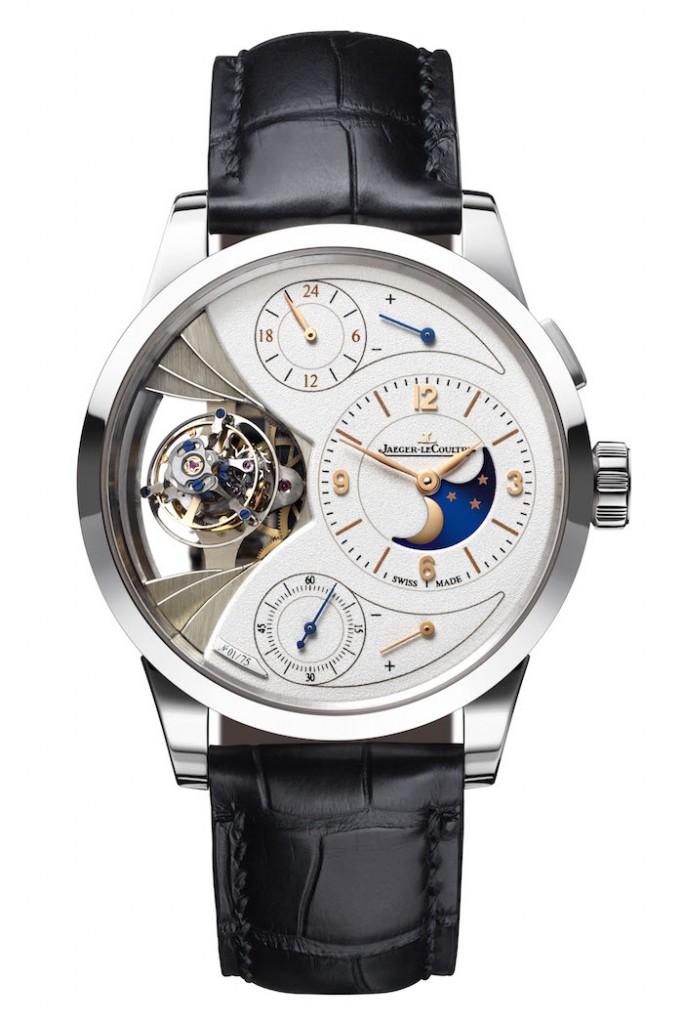
Jaeger-LeCoultre Duometre Spherotourbillon Moon is absolutely beautiful to look at, but it also comes with a very complicated movement, a bi-axial tourbillon so-called Spherotourbillon, now with an added moon-phase indicator. The price of this extremely complicated and highly appealing watch limited to 75 pieces.
The Spherotourbillon is one of Jaeger-LeCoultre‘s finest, together with the Gyrotourbillon. We’ve already covered it in a previous article about the Duometre à Spherotourbillon. This watch is based on two main innovations, both included in its name: the Duometre and the Spherotourbillon.
Not so long ago, requiring that a traditional calibre reliably handle an additional complication as well as indicating the time implied the risk of jeopardising the precision of the movement’s operation. Every additional complication affects timekeeping because of additional forces required to actuate levers and gears. Even a simple date disc needs those elements. The changing of the date is activated by gears or levers and the date wheel or date hand makes a jump.
To make the date wheel or pointer date hand jump, some forces are needed. In a small mechanical movement, these forces are relatively large. So large that they will effectively cause the watch to temporarily suffer a drop in precision, during the complication’s activation.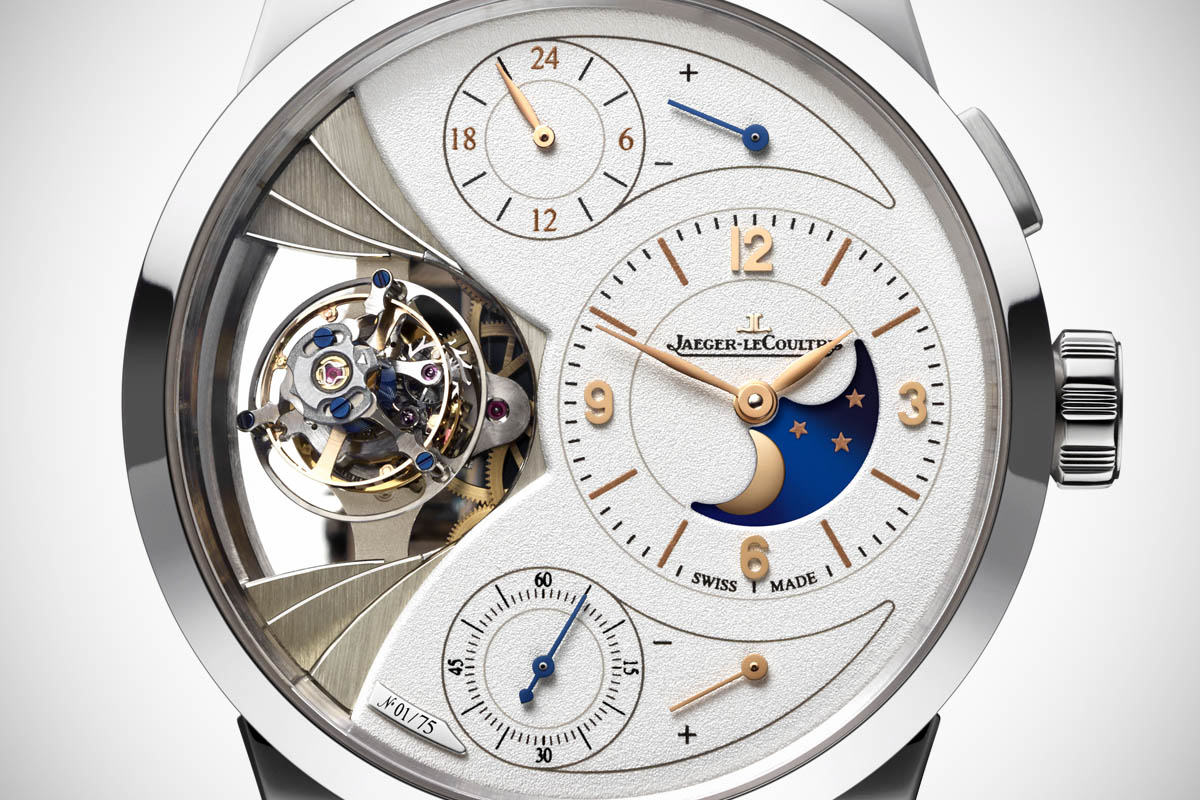
What Jaeger-LeCoultre did was to create two separate gear trains and main spring barrels, each driving a part of the watch: one to drive the time and one to drive the complication. This way the “time indicating part” of the watch runs free of negative influences. Of course, most of the indications are linked to time – a date might change at midnight, a moon-phase is regulated by the days and months.
The regulating organ is a special type of tourbillon, also known as bi-axial tourbillon. As well as revolving around the axis of its carriage, the tourbillon also spins around a second axis, inclined at a 20° angle. The combination of these two distinct and fast rotations provides a much better ‘protection’ from negative gravitational forces than any standard tourbillon. Also note that the Spherotourbillon comes with a specific cylindrical balance-spring.
What does it means on the new Jaeger-LeCoultre Duometre Spherotourbillon Moon? The dual wing concept here means that one main spring and gear train is driving the hours, minutes and seconds and a second main spring and gear train is driving the Moon-Phase indicator, located here inside the main dial. Both main springs are linked their own power reserve. When fully wound, the watch will run for 50 hours.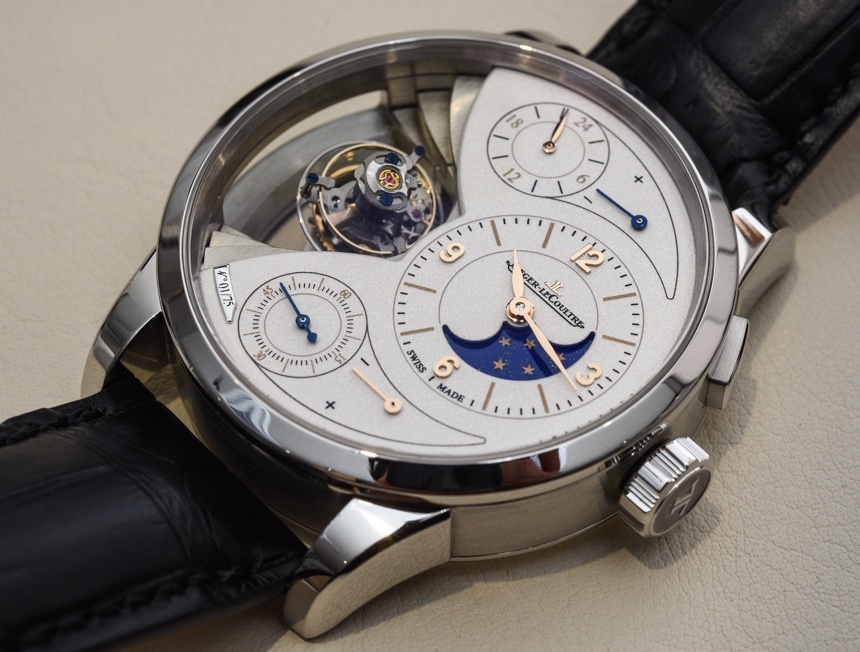
The moon-phase is extremely precise on the Duometre Spherotourbillon Moon, since when it is properly adjusted, it is designed to remain accurate for a full 3,887 years. Another technical feature is linked to the precision and adjustment of the watch. Instead of having a classical hacking second mechanism, the movement of this Duometre Spherotourbillon comes with a sort of flyback to reset the second hand to zero, with the help of a pusher located at 2:00. When pulling the crown, the balance wheel remains active and the watch thus remains accurate even when adjusting the time to the nearest second.
The Jaeger-LeCoultre Duometre Spherotourbillon Moon comes in a 42mm x 14.3mm case made of 18k white gold, with a grained silvery-white dial. Around the Spherotourbillon at 9:00, we can see a superb ‘stairway’ made of non-treated nickel silver with a satin finish, just like the main plate and bridges of the movement, of course all decorated by hand.


